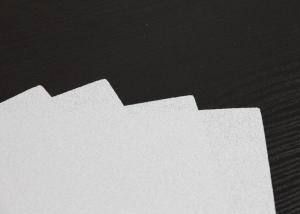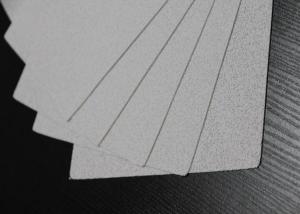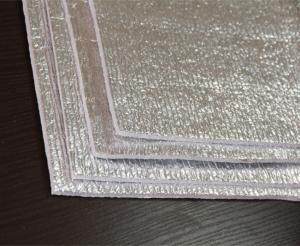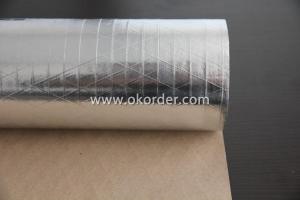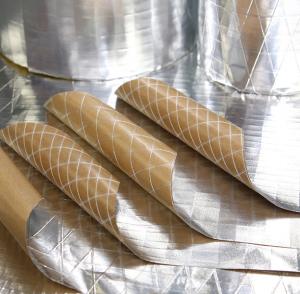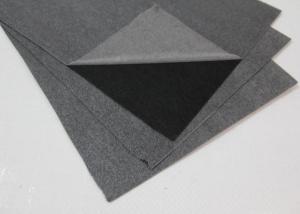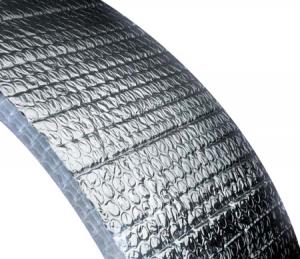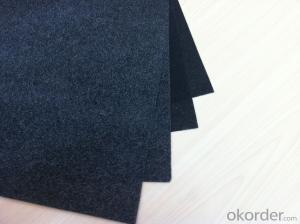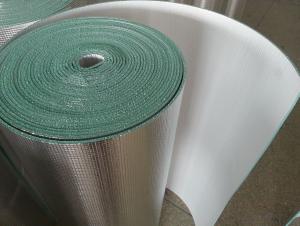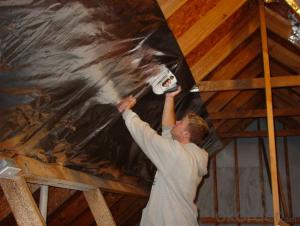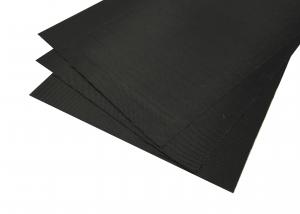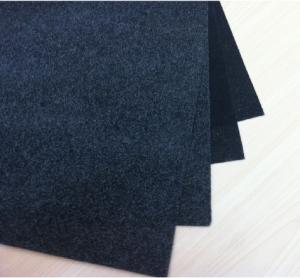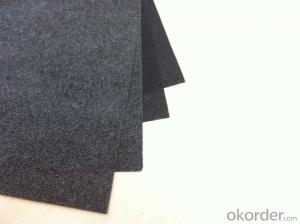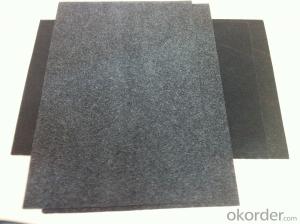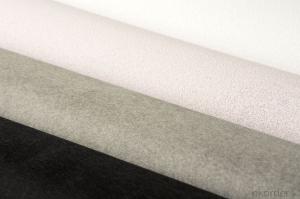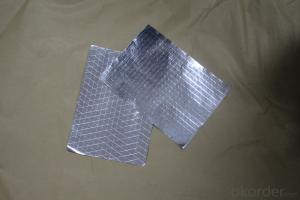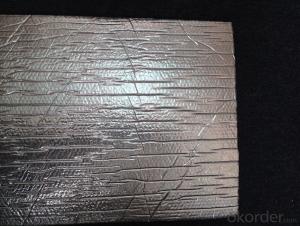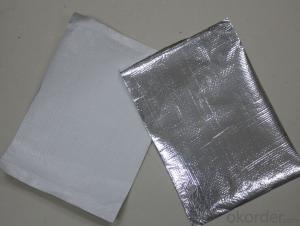White Spray Coating Tissue, 700#-W
- Loading Port:
- China Main Port
- Payment Terms:
- TT or L/C
- Min Order Qty:
- 10000M2 m²
- Supply Capability:
- 30000M2 Per Week m²/month
OKorder Service Pledge
OKorder Financial Service
You Might Also Like
Specifications of Spray Coating Tissue
700W
|
Specification | ||
|
ITEM |
UNIT |
VALUE |
|
Weight |
g/m2 |
380 |
|
Thickness |
mm |
0.55 |
|
Property ofFire Retardant |
|
Non-ignitability A level |
|
Tensile Strength MD |
n/5cm |
150 |
|
Tensile Strength CMD |
n/5cm |
110 |
SIZE:
Width: 0.6m---1.3m
Length: 50m-300m
Core I.D.: 3"(76mm ±1)
Based on order, special sizes are also available.
MSDS:No harm for body and environment, non-volatile product.
Remarks:
1. The data above are typical results and subject to change without notice.
2. Tolerance: Weight and Thickness: ±10%; Width: ±3mm; Length: ±0.5%.
3. The products should be stored at room temperature, kept from wet and kept away heat source.
4. Good appearance without stain, oxidation, mildew.
5. The users should take test and do trial-application on the above products before coming into application so as to witness and ensure suitability for their special purpose and technique.
Usage/Applications of Spraying Coating Tissue
Fiberglass facing is good at fireproof, mildew resistant, damp proof and strong air permeability. After laminated with glass wool or rock wool, the physical properties is excellent such as heat preservation, noise elimination, fire retardant, extinction, etc.
Packaging & Delivery of Spraying Coating Tissue
Each roll is packed by water-proof film

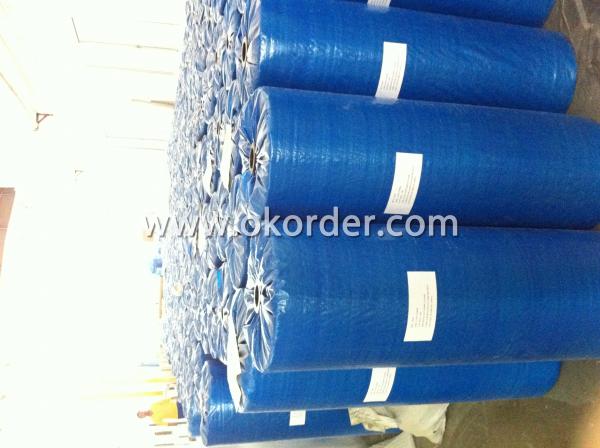
- Q:What are the potential drawbacks of using fiberglass facing?
- Using fiberglass facing in various applications has several potential drawbacks. Firstly, one major concern is the health hazards associated with fiberglass. Tiny glass fibers in fiberglass can easily become airborne when disturbed, leading to respiratory issues, skin irritations, and long-term health problems like lung diseases. Therefore, it is necessary to take proper safety precautions, such as wearing protective clothing and masks, when working with fiberglass. Another drawback is the degradation of fiberglass over time. Exposure to extreme heat or sunlight can cause the material to become brittle and crack, resulting in reduced insulation properties and decreased durability. Additionally, fiberglass is prone to moisture absorption, leading to deterioration and loss of effectiveness. Moreover, fiberglass facing may not be as effective as alternative materials in certain applications. For instance, it may not provide sufficient insulation in high-humidity areas or where there is a risk of water leakage. In such cases, materials like foam or foil-faced insulation may be more suitable. In addition, fiberglass facing can be costlier than other options. While the fiberglass itself is relatively affordable, the installation and maintenance costs can be higher due to the need for specialized equipment and safety measures. This can make fiberglass facing less cost-effective, particularly for smaller projects or those with limited budgets. Lastly, working with fiberglass facing can be challenging. The material is rigid and difficult to cut, shape, and install correctly. It requires specific tools and expertise, which may limit its accessibility for DIY enthusiasts or inexperienced individuals. To summarize, the potential drawbacks of using fiberglass facing include health hazards, degradation over time, limited effectiveness in certain applications, higher costs, and the difficulty of working with the material. It is crucial to carefully consider these factors before choosing fiberglass facing and to ensure proper safety measures are in place when working with it.
- Q:How does fiberglass facing improve insulation?
- By adding a layer of fiberglass facing, the insulation material is improved as it receives an extra layer of protection. This facing acts as a barrier, preventing the entry or escape of air and moisture from the insulation. This not only helps maintain the desired temperature inside the insulated area but also prevents the growth of mold or mildew. Moreover, the facing strengthens and increases the durability of the insulation, making it more resilient against damage and ensuring its longevity. Additionally, it enhances the fire resistance of the insulation, providing an additional level of safety. Overall, the fiberglass facing enhances the insulation's thermal performance, resistance to moisture, durability, and safety.
- Q:Does fiberglass facing require regular maintenance?
- No, fiberglass facing does not require regular maintenance. Fiberglass is a durable material that is resistant to many environmental factors, such as moisture, UV rays, and pests. It does not rust, rot, or decay like other materials, which means it does not need to be painted or sealed regularly. However, it is important to keep the fiberglass facing clean and free from dirt or debris to maintain its appearance and performance. Regular cleaning with a mild detergent and water should be sufficient to keep it in good condition. Additionally, if any damage or cracks occur in the fiberglass facing, it should be repaired promptly to prevent further issues. Overall, fiberglass facing is a low-maintenance option that can last for many years with minimal care.
- Q:Can fiberglass facing be recycled?
- Yes, fiberglass facing can be recycled. Fiberglass is a type of reinforced plastic made from fine fibers of glass, and the facing is typically a thin layer of fiberglass. While recycling fiberglass can be more challenging than other materials due to its unique properties, it is still possible to recycle it. The recycling process involves shredding or grinding the fiberglass material into small pieces, which can then be used to make new products. However, it is important to note that the recycling infrastructure for fiberglass may not be as widespread or easily accessible as for other materials, so it is advisable to check with local recycling facilities or specialized fiberglass recycling companies to understand the specific recycling options available in your area.
- Q:Fiberglass Felt Polyester Powder Adhesive Details
- The continuous raw silk mats are formed by the process of drawing the glass precursor or the continuous filament which is released from the original cylinder in the form of a 8-inch fabric on a continuous moving web and bonded with a powder binder. Continuous fiberglass filament fiber in the fiber is continuous, so the composite material to enhance the effect of shorter cut felt good. Mainly used in the pultrusion method
- Q:China's glass fiber product code is what?
- Will be replaced by N or K, respectively, said ND-8, KH-550; ④ EM will be used instead of CM, said the alkali fiberglass
- Q:What is the lifespan of fiberglass facing?
- The lifespan of fiberglass facing can vary depending on various factors such as quality, maintenance, and environmental conditions. However, on average, fiberglass facing can last anywhere from 20 to 50 years.
- Q:What is fiberglass facing?
- Fiberglass facing, also known as a thin fiberglass layer, is employed to cover or coat surfaces for diverse objectives. It usually consists of tightly woven glass fiber strands that are held together by a resin or adhesive. This facing material is renowned for its robustness, longevity, and ability to withstand heat, moisture, and chemicals. It is frequently utilized in the construction, insulation, and manufacturing sectors for purposes like insulation boards, ductwork, wall panels, and composite materials. By adding an extra protective layer, the fiberglass facing bolsters the structural soundness and effectiveness of the materials it is utilized on.
- Q:What is the glass fiber needle felt dust filter bag
- The fibrous web is reinforced by a felt-like nonwoven fabric filter material. Hangzhou Xiao Yang, yes
- Q:How does fiberglass facing compare to other types of insulation materials?
- Fiberglass facing is a popular choice for insulation materials due to its excellent thermal performance and durability. Compared to other types of insulation materials such as foam or cellulose, fiberglass facing offers superior resistance to moisture, mold, and pests. It also provides better fire resistance, making it a safer option. Additionally, fiberglass facing is relatively easy to install and has a long lifespan, making it a cost-effective choice for insulation needs.
1. Manufacturer Overview |
|
|---|---|
| Location | Jangsu, China |
| Year Established | 1999 |
| Annual Output Value | Above US$0.3 billion |
| Main Markets | 0.00% Mid East 15.00% Northern Europe 15.00% North America 10.00% Eastern Asia 20.00% Africa 0.00% Eastern Europe 20.00% Southeast Asia 0.00% Oceania 0.00% Western Europe 0.00% Southern Europe 0South east asia;North America |
| Company Certifications | ISO 9001:2008 |
2. Manufacturer Certificates |
|
|---|---|
| a) Certification Name | |
| Range | |
| Reference | |
| Validity Period | |
3. Manufacturer Capability |
|
|---|---|
| a)Trade Capacity | |
| Nearest Port | Shanghai |
| Export Percentage | 41% - 50% |
| No.of Employees in Trade Department | 20 People |
| Language Spoken: | English; Chinese |
| b)Factory Information | |
| Factory Size: | Above 100,000 square meters |
| No. of Production Lines | Above 4 |
| Contract Manufacturing | OEM Service Offered; Design Service Offered |
| Product Price Range | Average |
Send your message to us
White Spray Coating Tissue, 700#-W
- Loading Port:
- China Main Port
- Payment Terms:
- TT or L/C
- Min Order Qty:
- 10000M2 m²
- Supply Capability:
- 30000M2 Per Week m²/month
OKorder Service Pledge
OKorder Financial Service
Similar products
New products
Hot products
Related keywords
